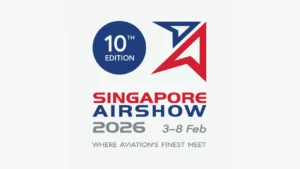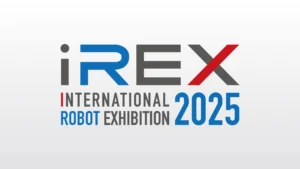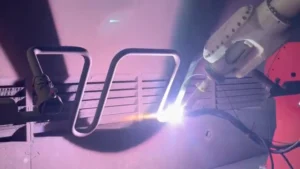table of contents
- Heading 1
- Heading 1
- Heading 1
share this
Thermal spray applications, such as plasma spray, HVOF, HVAF, and arc spray coatings, play a vital role in aerospace, industrial equipment, and MRO (Maintenance, Repair, and Overhaul) processes, where precision and consistency are essential. Achieving the required coating uniformity, adhesion, and minimal overspray hinges on how well robots are programmed to handle complex geometries and process parameters. However, robot programming for thermal spray presents unique challenges:
- Complex Surface Geometries: Components often feature intricate shapes, tight corners, and hard-to-reach areas that require precise toolpaths to achieve uniform coating thickness.
- Consistent Coating Quality: Maintaining optimal standoff distance, spray angles, and tool velocity is critical to achieving consistent material deposition.
- Dynamic Part Variability: In MRO processes, parts often vary due to wear or repair needs, demanding adaptability in programming.
- Avoiding Overspray: Overspray leads to material waste, rework, and inconsistent quality, necessitating precise control overspray patterns.
This article explores how different robot programming methods—Teach Pendant, Traditional Offline Programming (OLP), and Augmentus (vision-guided adaptive robotics)—address these challenges in thermal spray applications.
Understanding Thermal Spray Processes
Thermal spraying is a versatile coating process used to enhance surface properties such as wear resistance, corrosion protection, or thermal insulation. Common thermal spray techniques include flame spraying, plasma spraying, HVOF (High-Velocity Oxy-Fuel), and cold spraying.
Key factors to consider during thermal spray include:
- Precise Spray Motion: Ensuring controlled movement of the spray gun to achieve uniform coating and strong adhesion to the substrate.
- Consistent Stand-off Distance and Spray Angle: Maintaining a uniform distance and angle between the spray nozzle and the substrate to ensure even coating deposition.
- Overlap and Toolpath Accuracy: Ensuring precise overlap and spray path to prevent coating defects, such as gaps or excessive material buildup.
Programming Methods for Thermal Spray Applications
Teach Pendant Programming
The Teach Pendant method involves manually guiding the robot to create a series of waypoints for spray paths. While straightforward, it has significant limitations in addressing the unique challenges of thermal spray.
Advantages:
- Adjustments and corrections can be made instantly during programming since the operator is directly interacting with the robot’s motion, avoiding iterative simulations.
Challenges:
- Manual Path Creation: Operators must manually record every waypoint, a time-intensive process prone to errors.
- Consistency Issues: Maintaining uniform standoff distances and spray angles is difficult without precise manual control, leading to uneven coatings.
- Limited Adaptability: Adjusting to part variability or correcting errors requires reprogramming from scratch.
- Massive Downtime: Since programming is done directly on the robot, the robot remains non-operational during the programming phase. This leads to significant production downtime. Manufacturers doing complex parts can experience over 3 months of downtime for robot programming.
Use Case Suitability:
- Best for planar or linear path production where precision is less critical, and motion is straightforward.
Traditional Offline programming (OLP)
OLP uses CAD models and simulation software to create robot programs in a virtual environment. While it addresses some challenges of manual programming, it introduces its own limitations.
Advantages:
- Simulation helps ensure precise standoff distances, spray angles, and spray path overlap.
- Reduces the need for physical robot interaction during programming.
- Suitable for consistent, repeatable processes with standardized parts.
Challenges:
- Calibration Issues: Discrepancies between simulated and real-world conditions occur due to limitations in calibration settings within the simulation environment. As a result, the programmed robot path often deviates from the intended trajectory, leading to inaccuracies during execution.
- Dependency on CAD Models: OLP relies heavily on accurate and regularly updated CAD files. Without these, programming accuracy diminishes significantly.
- Limited Adaptability: Adjustments for dynamic part variability require significant effort, including reprogramming and resimulation.
- High Tool Complexity: The steep learning curve and manual adjustments required for tool usage result in increased downtime.
Use Case Suitability:
- Best for manufacturers with regularly updated CAD models. Without such data, OLP loses reliability and precision.
- Best for manufacturers with experienced robot engineers capable of handling complex robot simulation software.
Augmentus: Adaptive and No-code Robotics
Augmentus’ AutoPath software leverages computer vision and intelligent algorithms to rapidly 3D scan workpieces and automatically generate complex and precise robot toolpaths for surface finishing applications.
Advantages:
- Significantly reduces downtime for robot programming
- Eliminates the need for CAD files with direct 3D scanning of physical workpieces, ensuring accurate geometries essential for uniform coatings.
- Accelerates setup times, reducing the complexity of programming high-mix, low-volume thermal spray tasks.
How it works:
- Advanced 3D Scanning
Augmentus incorporates precise 3D scanning technology to create accurate 3D models of physical workpieces directly. This eliminates the need for CAD files and ensures the robot paths are optimized for the workpiece’s geometry, enabling uniform coatings even on irregular surfaces. - Automated Toolpath Generation
AutoPath generates optimal toolpaths specifically tailored to the scanned model’s geometry and allows for easy fine-tuning of thermal spray process parameters such as stand-off distances and spray angles. This feature minimizes manual adjustments and programming time, ensuring even and efficient coating coverage, especially on complex or irregular surfaces. - Trajectory Optimization
The Path Optimizer automatically resolves kinematic challenges such as singularity, reachability, and collision issues while maintaining the spray angle within a defined tolerance range. By coordinating multi-axis movements for synchronized motion and ensuring precision with consistent tool velocity, it enables seamless automation across complex geometries, eliminating the need for manual adjustments. - Offline Simulation
Offline programming allows engineers to simulate and validate robot paths specific to thermal spray requirements, such as achieving the ideal overlap ratio and maintaining consistent spray patterns. This reduces trial-and-error adjustments and ensures optimized robot paths before deployment, minimizing wasted material and production downtime. - In-Situ Part Correction
Augmentus addresses real-world variances, such as part misalignments and inconsistencies, by automatically adjusting the robot’s path during thermal spray operations based on each part. This ensures coating precision even under variable conditions, critical for maintaining high-quality standards in industrial applications. - Closed-Loop Automation
Augmentus’ closed-loop automation integrates continuous inspection and adjustment, enabling precise, localized thermal spray treatments. This is particularly useful for cases such as Maintenance, Repair, and Operations (MRO) processes where only a certain area needs to be processed. This ensures uniform coating thickness and minimizes overprocessing, reducing waste and manual rework while maintaining strict quality control standards.
Use Case Suitability:
- Best for high-variability environments, including MRO, and for high-complexity parts requiring precise, repeatable coatings.
Comparative Analysis for Thermal Spray Applications
| Aspect | Teach Pendant | Traditional OLP | Augmentus |
| Programming Workflow | Manual, waypoint-by-waypoint | CAD-based, simulated virtually | 3D scanning and automated path generation |
| Ease of Use | Labor-intensive; requires expertise | Requires CAD and simulation expertise | Intuitive, minimal training needed |
| Coating Consistency | Operator-dependent; prone to variability | Relies on accurate calibration and simulation | Uniform coating ensured through optimized toolpaths and feedback |
| Adaptability to Variability | Low | Moderate; requires CAD updates and recalibration | High; dynamically adapts to changes in parts |
| Calibration Dependence | Low | High; discrepancies in calibration affect results | Automatically calibrates where the part is relative to the robot to ensure accurate process |
| Programming Time | Long for complex geometries | Moderate; CAD preparation required | Significantly reduced through advanced algorithms |
| Collision Avoidance | Manual | Requires simulation and manual refinement | Automated |
| Use Case Suitability | Planar/linear path production | Manufacturers with regularly updated CAD models | High-complexity, high-variability environments like MRO |
Augmentus: Redefining Thermal Spray Programming
Augmentus excels in thermal spray applications by automating complex processes and delivering unmatched adaptability and precision. Its features, such as integrated 3D scanning, AutoPath, Path Optimizer, and closed-loop automation, make it the ideal solution for:
- Achieving consistent, uniform coatings on complex geometries.
- Adapting to dynamic part variability in high-mix environments like MRO.
- Reducing programming time and material waste through intelligent automation.
Beyond Thermal Spray Applications
While Augmentus excels in thermal spray, its capabilities extend to other applications, including media blasting, welding, sanding, and painting. The same principles of adaptability, precision, and automation make it a versatile tool for manufacturers seeking efficiency, precision, and scalability in robotic programming.
See Augmentus in Action
Experience how Augmentus can transform your robotic programming processes. Schedule a demo today to explore its capabilities and discover how it can streamline your operations, reduce downtime, and enhance precision across applications.




